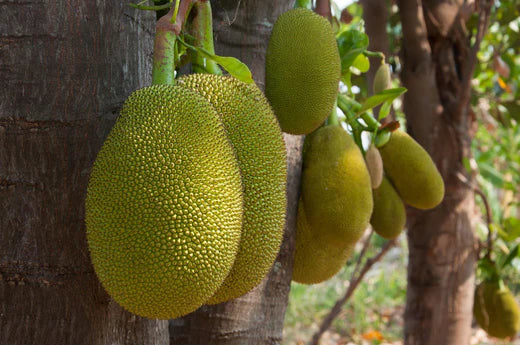In the holistic approach to health and wellness, ayurvedic herbs and spices play a significant part. This science is constantly working to promote good health without causing any adverse effects and uses only natural substances. It functions in conjunction with some dietary adjustments and yoga that help to provide effective illness protection. Ayurveda is a conventional medical system that has its roots in India. By making some simple dietary adjustments, this system helps us preserve wellness in our mental, spiritual, and physical health. Ayurvedic remedies have several scientifically proven medical advantages that enable us to find treatments for illnesses that are resistant to Western therapy.
General Information
It has been demonstrated that using certain ayurvedic herbs can improve vitality, help cleanse and detoxify the body and blood, improve metabolic function, aid in weight loss, improve skin texture, and have none of the negative side effects associated with conventional Western medications. Atibrihatphala presents different health-beneficial viewpoints that aid in a variety of bodily functions. Ayurvedic medication called jack tree helps to treat wounds and Vataj illnesses like Bell's palsy boosts sperm count by enhancing vitality and motility, helps to give the body power, avoids diarrhea, and treats numerous skin conditions.
Special Note About This Plant
The Latin name for Ati Brihat Phala, Artocarpus Integra, indicates that it is a member of the Moraceae family. The fruit's latex aids in wound healing and lowers inflammatory illnesses, and it gives the body excellent nourishment and power. This medicinal herb can be used to cure several ailments caused by a Vata dosha predominance, including Bell's palsy and trigeminal neuralgia. Because this herb is so difficult to digest, it must be taken strictly under the direction of pathya-apathya while using this Ayurvedic treatment. This plant's fruits are enhanced with beta-carotene and sucrose, two carbohydrates. This plant's fruits, leaves, bark, and latex are used to cure a variety of health issues. It is found in the lower Himalayas at elevations of 4000 feet, such as Assam, Bihar, Orissa, and the central and southern parts of India.
Systemic Classification
- Botanical Name - Artocarpus Integra
- Family - Moraceae
Synonyms
- Kantkiphala (the fruit consists of thorns)
- Amashayaphala (fruit resembles abdomen)
- Atibrihataphala (bigger fruit)
Other Vernacular Names
- Sanskrit Name - panas, kantkiphala (the fruit consists of thorns)
- Hindi Name - Katahal
- Bengal Name - Kantal
- Gujarati Name - Phanas
- English Name - Jack tree
Habitat
This large, broad tree, which may grow to a height of fifty to sixty feet, is grown all over India, primarily in regions with temperate weather.
- Bark - This swollen, shattered tree is made of milky latex.
- Leaves - Its thicker leaves, which can be up to four to six inches long and have an oval to circular shape, give the upper surface a shiny appearance.
- Flowers - Although its flowers are modest and somewhat inconspicuous, its fruits can reach heights of two to three feet and have sharp spikes on their exterior surface.
- Fruit that has been ripened has a yellow color and a sweet flavor.
- Seeds - Its seeds are oval to circular in shape, with a thin coating, and are commonly seen between the months of April and June.
Classical Categorization
- Acharya Sushrut - has included references to its Rasa and Gunna in each Samhita.
- Bhavprakash - This therapeutic herb is described in their textbooks.
Ayurvedic Properties of Ripened Fruit
|
|
Hindi / Sanskrit |
English |
|
Rasa (Taste) |
Kashaya, Madhur |
Astringent, Sweet |
|
Guna (Physical Property) |
Guru, Snighdh |
Heavy, Moist |
|
Virya (Potency) |
Sheeta |
Cold |
|
Vipaka (Post-Digestive Taste) |
Madhur |
Sweet |
Effects On Doshas
Its Ripened fruit helps to balance the Vata and Pitta dosha.
Its unripe fruit can vitiate the Vata and Pitta doshas and help to enhance Kapha. Its pulp is erotic in nature and balances Pitta dosha, while the seeds are slightly astringent in flavor and raise vata dosha.
Practical Uses
- Depending on the strength of your digestive fire and metabolic ability, you can consume this fruit in moderation because it gives the body strength and nutrients.
- The fruit's latex can aid in wound healing and also help to lessen the swelling that occurs during that process.
- Jackfruit leaves are applied to the affected area, such as the cheek region and the management of Bell's palsy and trigeminal neuralgia, after being slightly heated with some application of sesame oil, which is also a very good vata Shamak.
- Blood coagulant qualities and blood cleansing benefits of ripe jackfruit aid in controlling bleeding from wounds.
- The decoction of jackfruit bark is also beneficial in the treatment of Diarrhea and other Skin problems.
- This also helps to increase sperm count by increasing vitality, quantity, and quality.
- A decoction of the roots and leaves can also be used to treat toxicity caused by insect or snake bites.
- To achieve good effects in glandular swellings, the latex of the Jack tree is mixed with vinegar.
- This plant is also used to treat respiratory issues such as coughs, colds, and asthma.
- This herb has traditionally been used as a heart tonic to boost the body's vigor and immunity.
- According to legend, this plant is grahi, or naturally an excellent absorbent, and it can treat diarrhea and irritable bowel syndrome.
- The mouth cavity can be cleaned with the flowers of the Jack tree.
- This healing plant also provides flavor, aids in Dhatus regeneration, and has strong characteristics. It is also used to cure epigastric burning.
Part used
For this tree, latex, bark, fruits, and leaves are all used.
Dosage
The decoction dosage ranges between 50 and 100 ml.

